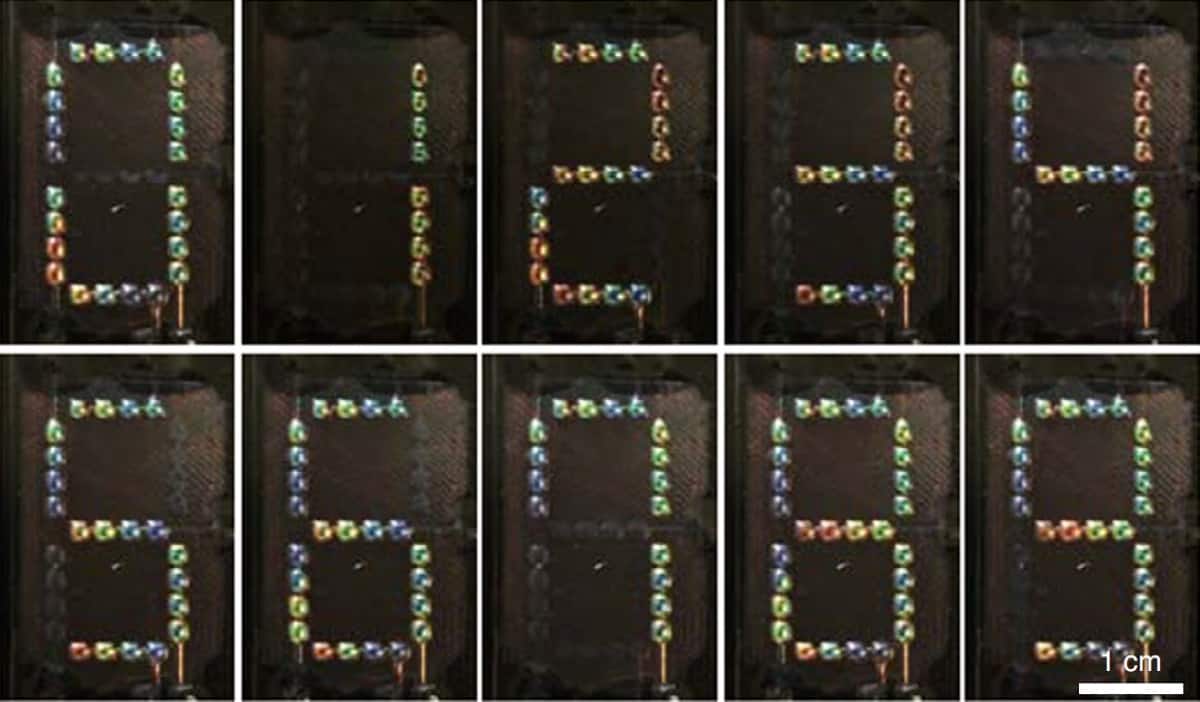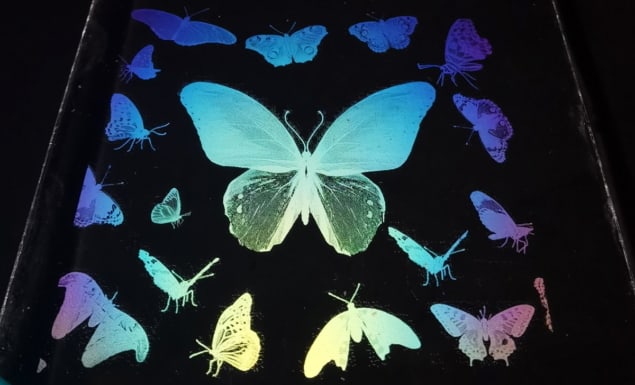Inkjet technique prints rainbow of structural colours from a single transparent ink
07 Oct 2021
Scientists in China have developed a technique for printing structural colours using a commercial inkjet printer. The researchers used a transparent polymer ink to print dome-shaped microstructures, with the height and diameter of the microdome controlling the wavelength of light reflected and the colour produced.
Most colour images are created by printing using inks based on dyes and pigments. These absorb some wavelengths of light and reflect others back, creating the colour that we perceive. But colour can also be produced using nanostructures that scatter and reflect different wavelengths of light in different ways – so-called structural colour.
Printing similar light-scattering structures using transparent polymers could offer advantages over standard colour printing techniques, particularly as the chemicals used to produce some dyes and pigments have caused serious health and pollution problems, says Yanlin Song, a chemist at the Chinese Academy of Sciences in Beijing.
“We wanted to print colour images with structural colour,” Song tells Physics World. “Compared with traditional pigments and dyes, structural colours can resist photobleaching and avoid the use of toxic materials. They are eco-friendly and fade-resistant.”
To print structural colours, the researchers used an inkjet printer to deposit droplets of a transparent polymer on a hydrophobic, transparent surface. After printing, surface tension causes the droplets to retract into microdomes with large curvature angles. Each microdome acts as a single pixel and when light enters the dome it undergoes total internal reflection. The team found that by controlling the ink volume they could precisely control the size and shape of each dome and the wavelength of light that it reflects, thus changing the pixel’s colour.
The technique, which the researchers named droplet-by-droplet printing, takes advantage of the way that inkjet printers work. By printing spatially distributed separated subpixels of different sizes and colours that form a larger composite pixel, inkjet printers can produce almost unlimited blends of colours. In a similar way, the scientists used the inkjet printer to print different sized microdome subpixels to create a range of larger composite pixels. Doing this, they found they were able to produce a palette of 36 structural colours covering a wide-range of colours and adjustable lightness.
To test their printing technique, the team printed colour images of various solid-coloured animals, including a green reptile and a yellow bird, as well as multicolour images such as a colourful peacock and butterflies. The researchers also printed elaborate portraits of famous figures including Isaac Newton, Audrey Hepburn and Marilyn Monroe. These portraits had a number of technically challenging elements, such as grayscale gradients, but the researchers found that they could still be produced with very high fidelity using their novel structural colour printing technique.
“With the advantages of simple manufacturing and widely available inks, we think this colour printing approach presents great potential in imaging, decoration, sensing and biocompatible photonics,” says Song.
Due to their structural nature, the colours also have other characteristics not normally present in printed inks. The printed structural colours can have angle-dependent characteristics, with changes in illumination or viewing conditions affecting the total internal reflection paths and interference rays, leading to the production of different colours.READ MORE

The optical characteristics are also asymmetric. As the inks are printed on a transparent panel, this means that while they produce colour when viewed from one side, if they are turned over and viewed from the other side they are completely transparent. According to the researchers, these characteristics could have uses in applications ranging from smart windows to anti-counterfeiting technology.
“A fascinating property of the structural colour is its iridescent and dynamic feature, which can exhibit amazing colour change under different conditions,” Song explains. “Thus, decoration and anti-counterfeiting may be promising applications.” Song tells Physics World that the researchers now plan to experiment with printing with different materials, to try to “combine the inherent properties of polymer materials – such as shape memory and smart response – with the structural colours, to explore more interesting features and functions”.
The researchers describe their study in Science Advances.
Michael Allen is a science writer based in the UK
from physicsworld.com 15/10/2021

Δεν υπάρχουν σχόλια:
Δημοσίευση σχολίου